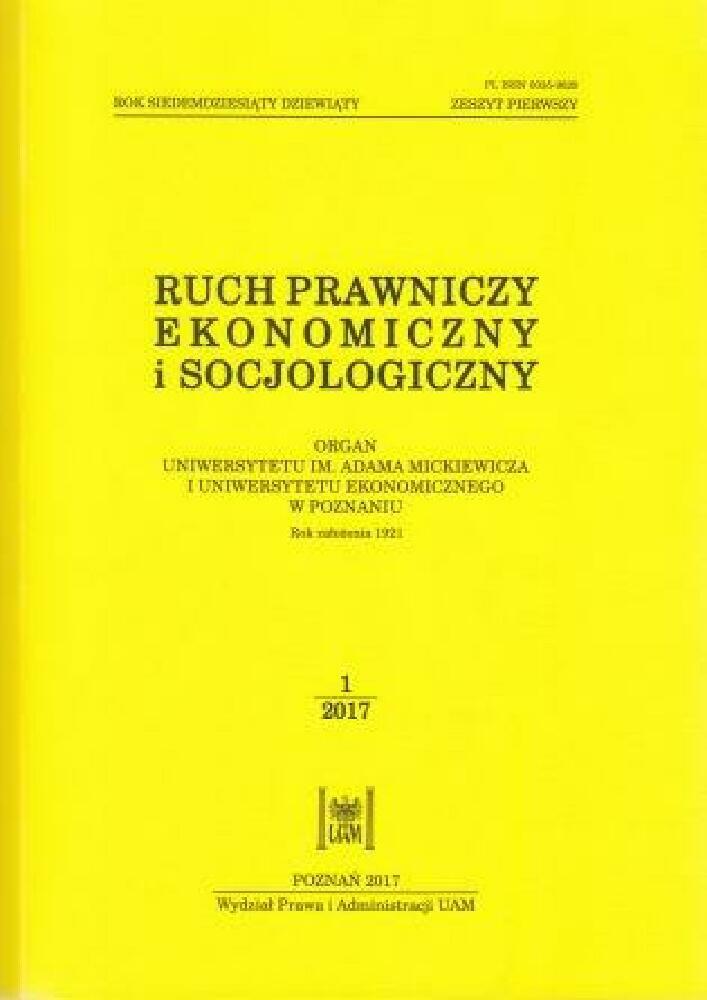Abstract
The article is a theoretical basis for the empirical analysis of prices conducted in accordance with Post-Keynesian economics. Post-Keynesians, taking into consideration critical realism as a methodological base of Post-Keynesian economics, distinguish three pricing theories: administered prices, normal cost prices and mark up prices. In this article, a particular attention is paid to those elements of the three theories that indicate the significance of industry concentration in price setting. The analysis which has been carried out indicates a modest significance of concentration in Post-Keynesian pricing theories. Only the in mark up theory, which originated from Michał Kalecki’s works, concentration matters explicitly. In the normal cost prices theory, themonopoly degree matters only in the profit rate, and in the administered prices theory there is no such clear relation. None of the theories discussed confirmed the impact of the monopoly degree on the variability of prices. It should be pointed out that in Post-Keynesian price theories, it is the variable which represents the supply side (e.g. the production costs) which is of key importance. The reason for a price change is not the change in the demand but the change in the costs or in the strategy of the enterprise.
Funding
National Science Centre Research Grant no. DEC-2013/09/N/HS4/03699
References
Andrews, P.W.S. (1949), A reconsideration of the theory of the individual business, Oxford Economic Papers 1(1), 1949.
Andrews, P.W.S. (1949), Manufacturing Business, Macmillan, London.
Andrews, P.W.S. (1950), Some aspects of competition in retail trade, Oxford Economic Papers 2(2).
Arestis, P. (1996), Post Keynesian economics: towards coherence, Cambridge Journal of Economics 20(1).
Arestis, P., Dunn, S.P., Sawyer, M. (1999), Post Keynesian economics and its critics, Journal of Post Keynesian Economics 21(4).
Berle, A.A., Means, G.C. (1932), The Modern Corporation and Private Property, Macmillan, New York.
Boehlke, J. (2010), Firma we współczesnej myśli ekonomicznej: studium teoretyczno-metodologiczne, WN UMK, Toruń.
Davidson, P. (1991), Is probability theory relevant for uncertainty? A post Keynesian perspective, Journal of Post Keynesian Economics 5(1).
Davidson, P. (1996), Reality and economic theory, Journal of Post Keynesian Economics 18(4).
Davidson, P. (2011), Post Keynesian Macroeconomic Theory, Second Edition – A Foundation for Successful Economic Policies for the Twenty-First Century, Edward Elgar.
Dow, S.C. (1990), Post Keynesianism as political economy: a methodological discussion, Review of Political Economy 2(3).
Downward, P. (2000), A realist appraisal of Post-Keynesian pricing theory, Cambridge Journal of Economics 24.
Eichner, A.S. (1976), The Megacorp and Oligopoly: Micro Foundations of Macro Dynamics, CUP, Cambridge.
Galbraith, J.K. (1973), Economics and the Public Purpose, Penguin, Hormondsworth.
GyunCheolGu, Pricing, price Stability, and Post Keynesian Price Theory, University of Missouri – Kansas City 2012, (nieopublikowana).
Hall, R.L. Hitch, C.J. (1939), Price theory and business behaviour, Oxford Economic Papers 1939, May, 2.
Kalecki, M. (1986), Teoria dynamiki gospodarczej, wyd. 3, PWN, Warszawa.
Keynes, J.M. (1937), The General Theory of Employment, Quarterly Journal of Economics 1937, February.
Keynes, J.M. (2011), Ogólna teoria zatrudnienia, procentu i pieniądza, WN PWN, Warszawa.
Lavoie, M. (1992), Foundations of Post-Keynesian Economic Analysis, Edward Elgar.
Lawson, T. (1989), Abstraction, tendencies and stylised facts: a realist approach to economics analysis, Cambridge Journal of Economics 13.
Lawson, T. (1994), The nature of post Keynesianism and its links to other traditions, Journal of Post Keynesian Economics 16(4).
Lee, F.S. (1990–1991), Marginalist controversy and Post Keynesian price theory, Journal of Post Keynesian Economics 13(2).
Lee, F.S. (1990), The modern corporation and Gardiner Means's critique of neoclassical economics, Journal of Economic Issues 24(3).
Lee, F.S. (1994), From Post-Keynesian to historical price theory, Part I: Facts, theory and empirically grounded pricing model, Review of Political Economy 6(3).
Lee, F.S. (2002), Theory creation and the methodological foundation of Post-Keynesian microeconomics, Cambridge Journal of Economics 26.
Lee, F.S. (2003), Post Keynesian Price Theory, CUP, Cambridge.
Lerner, A.P. (1934), The concept of monopoly and the measurement of monopoly power, The Review of Economic Studies 1(3).
Lopez, J.G., Assous, M. (2011), Michał Kalecki, PTE, Warszawa.
Means, G. (1940), Big business, administered prices, and the problem of full employment, Journal of Marketing 4(4).
Means, G.C. (1935), Price inflexibility and the requirements of a stabilizing monetary policy, Journal of the American Statistical Association 30(190).
Osiatyński, J. (1989), Mikroekonomiczne podstawy makroekonomii Kaleckiego, Ekonomista 3.
Reynolds, P.J. (1983), Kalecki's degree of monopoly, Journal of Post Keynesian Economics 5(3).
Samuels, W.J., Medema, S.G., Gardiner, C. (1989), Means's institutional and Post-Keynesian economics, Review of Political Economy 1(2).
Shapiro, N., Sawyer, M. (2003), Post Keynesian price theory, Journal of Post Keynesian Economics 25(3).
License
Copyright (c) 2017 WPiA UAM

This work is licensed under a Creative Commons Attribution-NonCommercial-NoDerivatives 4.0 International License.




